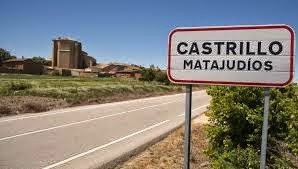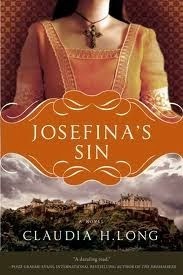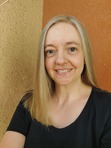What's in a Name? — Guest Post by Author Claudia H. Long
 Please welcome author Claudia H Long, author of The Duel for Consuelo, to the blog! Visit her blog once you've read about this fascinating slice of Spanish culture.
Please welcome author Claudia H Long, author of The Duel for Consuelo, to the blog! Visit her blog once you've read about this fascinating slice of Spanish culture. When a town's name is so awful, why does it take 1000 years to change it?
When a town's name is so awful, why does it take 1000 years to change it?On May 25, 2014, the residents of the town of Castrillo Matajudíos, Spain, voted 29-17 to change the name of the town back to its original name, Castrillo Motajudíos. The first name means "Kill Jews" and the second can be translated as "Mount of Jews." (Mota variously translates as "speck," "mount" as a variation of monte, and as a slang for marijuana…)
The change led to some interesting discussions on the Internet. Excluding the trolls of various sorts, three themes emerged: first, what took them so long? Second, how did a town get such a name in the first place? And third, does changing the name white-wash the past or move the town, and Spain, into the 21st century? All three themes reverberate in the history of the Spanish Jews and the Conversos, or forced converts to Christianity.
The Jews were exiled from Spain in 1492, at the time that the Muslims were expelled as well. Persecution had gone on for centuries, of course, but Jews, Christians and Muslims lived in an uneasy peace until the expulsion edicts finally put an end to co-existing.
But not all Jews left the only homes they had ever known. Having lived in Spain for four hundred years, it was as much their country as America can be to any of us. Contradictory edicts made it impossible to leave, mandatory to leave, requiring conversion, denying the merits of the conversion, all with the drumbeat of confiscation of wealth behind the acts. So not only were Jews required to leave or convert, they often were prevented from exercising either choice.
The town of Castrillo Matajudíos was originally, back in 1035, Castrillo Motajudíos, when 65 Jews were slaughtered and the remaining Jews fled to that hill. Apparently the name was changed to Matajudíos in 1627. The answer to the question of why it was changed is not apparent, but theories are in two camps: First, that it was a slip of the pen, a typo if you will. Oops, Jews killed here. Second, that it was changed by the Conversos, those unfortunates who had "elected" to convert to Christianity rather than die a hideous death.
The timing would indicate that it was the great-great-grandchildren of the original converts who would have chosen this name, theoretically to "prove" their allegiance to the new religion. This is not as far-fetched as it seems today. Conversos and their descendants were fiercely persecuted. Any hint of Judaizing, or secretly practicing their old religion, was ruthlessly ferreted out by the Inquisition, which led Conversos to the practice of haciendo sábado, or "doing the Sabbath." This involved ostentatiously working on Saturday so the neighbors could see them, eating pork in public, and putting on other displays of Christianity. Naming the town after the killing of one's ancestors is only a small step beyond what we know the Conversos had to do to survive.
As to why it took so long to change, the mayor of the town opined that most residents didn't even notice the name, having lived with it all their lives. Only when they traveled abroad and were embarrassed by the name on their passports, or when the town tried to attract tourism, did they consider its offensiveness. It is often the ingrained prejudice we have that is so routine to us that we don't even notice it!
Should the name be changed? Does the change close an ugly 1000-year chapter or whitewash it into the mists of the past, a past we are condemned to repeat?
Claudia H Long The Duel for Consuelo www.claudiahlong.com/blog
 Claudia H Long is the author of Josefina's Sin and The Duel for Consuelo. Both books follow the stories of women in 1690-1711 Colonial Mexico. Consuelo is the daughter of a wealthy mayor and the descendant of Conversos who made their way to the New World as financial advisers to the Vice-Royal Court. She is torn between loyalty to her family's past and the desire to make a clean start without the taint of the old religion. Her longings are complicated by the Inquisition in its waning years and two men with secrets of their own.
Claudia H Long is the author of Josefina's Sin and The Duel for Consuelo. Both books follow the stories of women in 1690-1711 Colonial Mexico. Consuelo is the daughter of a wealthy mayor and the descendant of Conversos who made their way to the New World as financial advisers to the Vice-Royal Court. She is torn between loyalty to her family's past and the desire to make a clean start without the taint of the old religion. Her longings are complicated by the Inquisition in its waning years and two men with secrets of their own.
Published on June 09, 2014 00:30
No comments have been added yet.



